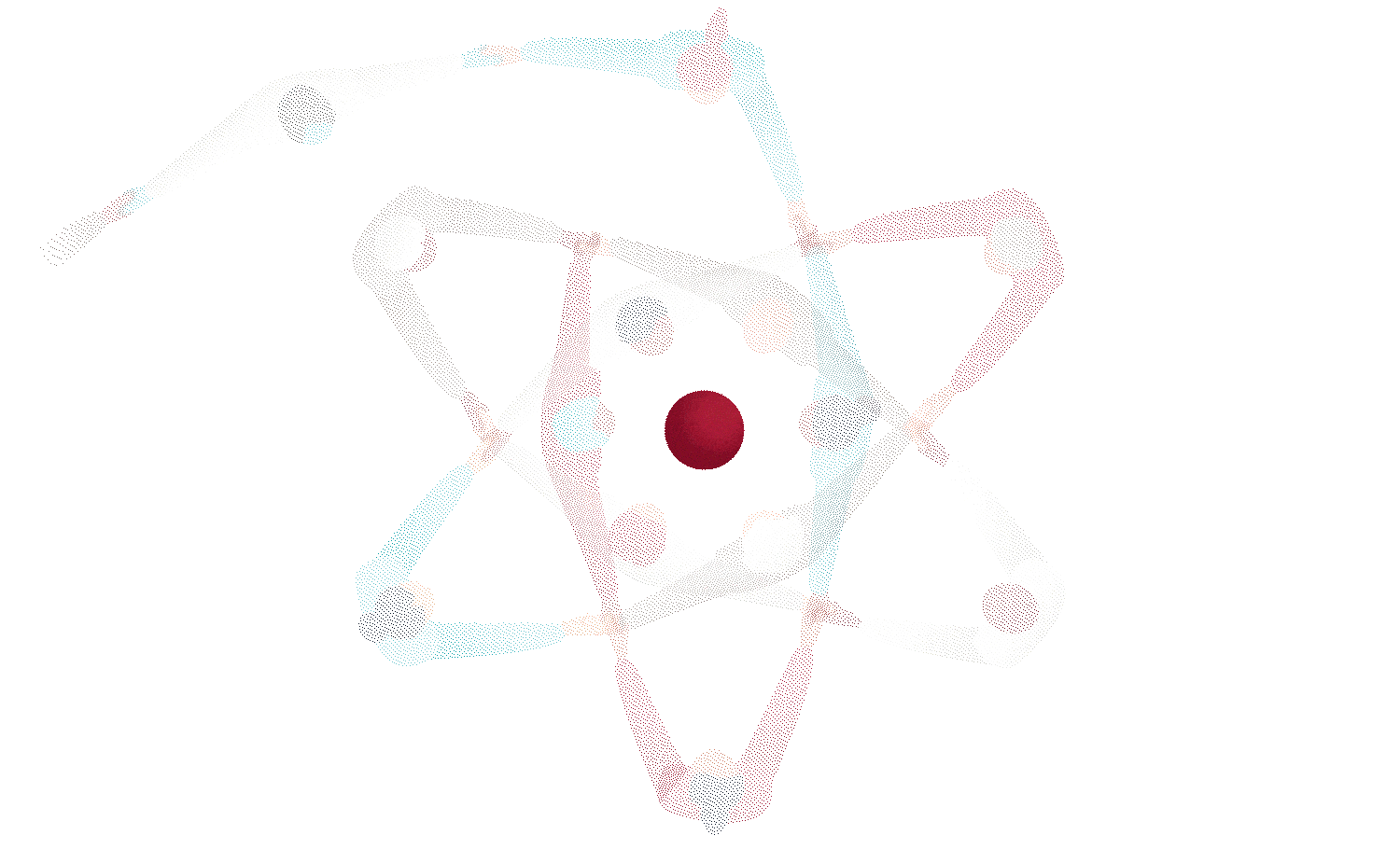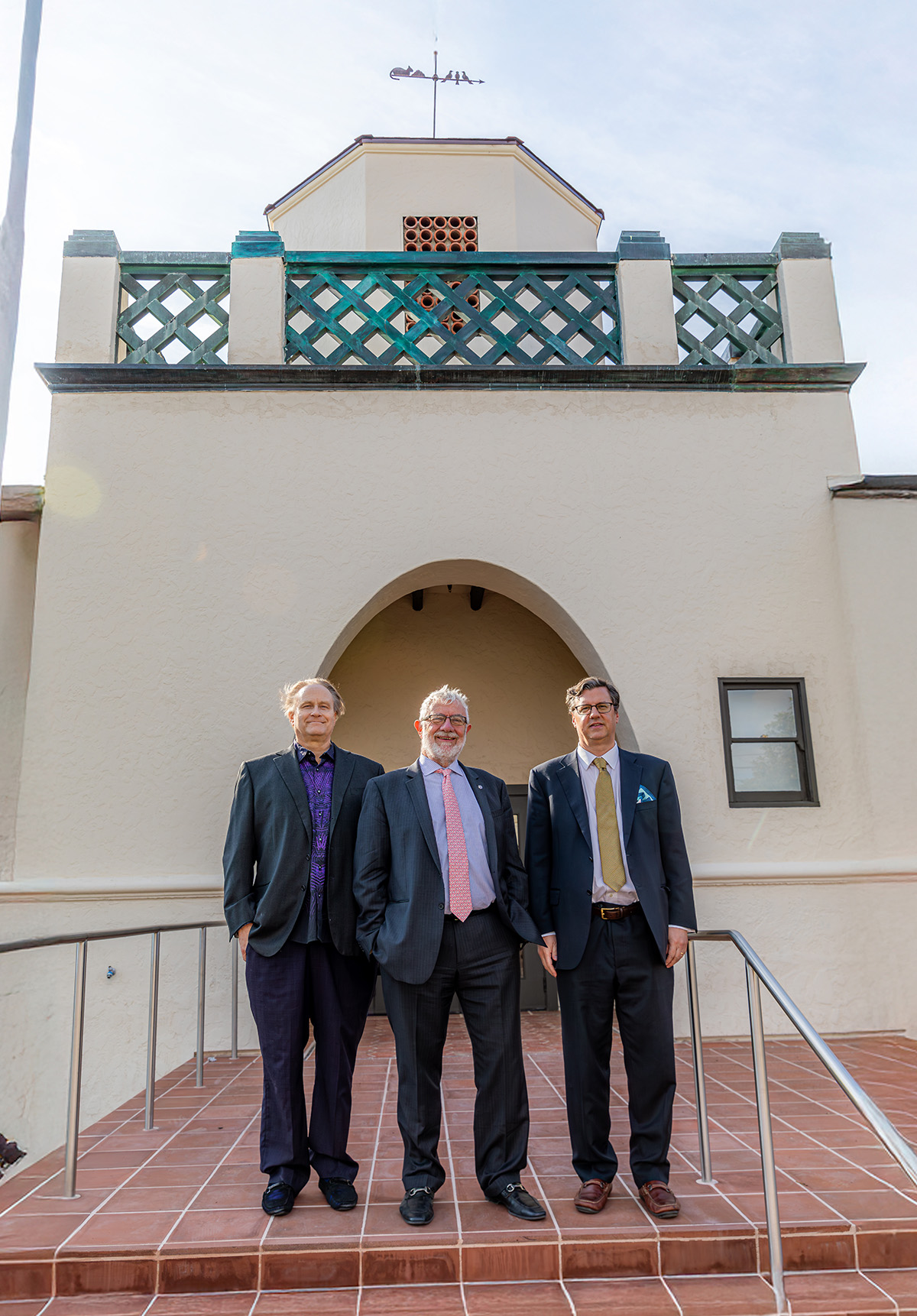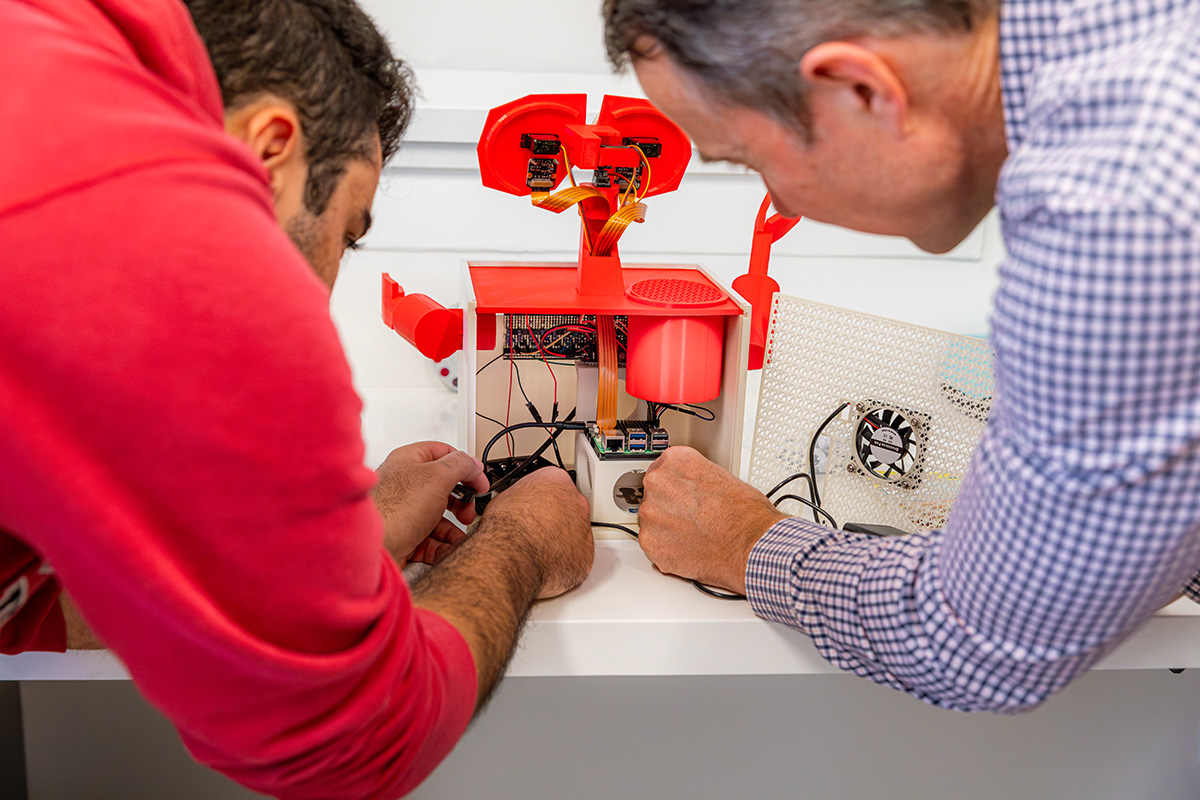

Feature

The university’s institute for quantum science is probing the invisible terrains of existence, unraveling the mysteries within ourselves and the world around us.

A NEW HUB FOR INNOVATION
For more than a decade, IQS researchers and educators performed their groundbreaking work in a decentralized manner. This will change with the forthcoming opening of the Daniele C. Struppa Research park, located at the renovated site of the historic Lydia D. Killefer School, a registered landmark important to the history of desegregation in the United States.
This new facility includes a quantum research hub, which recently received a $2.43 million grant from the John Templeton Foundation. The hub will focus on key topics in quantum foundations research and aims to become the primary center of excellence for the field in the U.S. Insights and discoveries in quantum foundations will be shared with the scientific community and the public through regular seminars, annual conferences and public lectures. This unique collaboration involves theoretical physicists, experimental physicists and philosophers who will apply methods from their respective disciplines to gain a deeper understanding of the nature of reality.

(From left) IQS co-director Jeff Tollaksen, President Daniele Struppa and IQS co-director Andrew Jordan in front of the new IQS building.
“The John Templeton Foundation grant establishing the Southern California Quantum Foundations Hub at Chapman University is a testament to the transformative impact of our faculty’s interdisciplinary research— both past and future,” said Chapman President Daniele C. Struppa, Ph.D. “With this grant, our university is positioned to become the leading center for quantum foundations research in the United States, a field ripe with potential for significant scientific discoveries and a greater understanding of reality.”
Quantum foundations research seeks to understand what supports quantum-level phenomena from operational, scientific, or philosophical perspectives.
“This is a unique achievement, and Chapman should be proud,” Jordan noted. “Many universities around the world have quantum programs, and while that has become quite fashionable, they tend to focus on practical applications, such as using quantum physics to create better computers or sensors. While that work is important, we are undertaking an effort that I believe is unparalleled in the U.S.—addressing foundational questions from an interdisciplinary perspective.”
While quantum foundations are a major focus for the IQS team, the university’s Advanced Physics Laboratory (APL) is concentrating on other areas of quantum materials research, funded by the Office of Naval Research.
A primary goal of the APL is to achieve room-temperature superconductivity, which would enable the transmission of electrical energy without resistance under normal conditions. The practical applications of such technology could lead to ultra-efficient computing systems, improved quantum information processing, and advanced electricity grids, all of which would significantly transform society.
“WE ARE UNDERTAKING AN EFFORT THAT I BELIEVE IS UNPARALLELED IN THE U.S.—ADDRESSING FOUNDATIONAL QUESTIONS FROM AN INTERDISCIPLINARY PERSPECTIVE.”
“With this move, our progress will continue to accelerate,” said Armen Gulian, senior research scientist and director of the APL. “Chapman is starting to compete with larger institutions in the field of physics.”
In addition to Gulian’s work at the APL, professors Ebrahim Karimi and John Howell are leading their own experimental labs in the new facility. Karimi focuses on the structure of light, while Howell conducts research in optics and precision measurements.

> John Howell, professor of physics

RESEARCH WITH PURPOSE
At Chapman University, scientists often aim to produce research that has practical utility for the general public. Even in the abstract field of quantum physics, researchers are developing work that significantly impacts the world. One such project is Howell’s PiMICS, a multispectral camera created with his students to serve as an affordable teaching tool for under-resourced schools worldwide.
During his tenure as president of the International Commission for Optics, which promotes the advancement of optical science globally—especially in developing countries—Howell engaged with educators from Africa to understand their needs for enhancing learning in their communities.
“I wanted to find out how best we could serve the continent,” Howell stated. “They said we needed hands-on learning tools.”
A little over a year ago, PiMICS was born.
Multispectral cameras can address problems that are not visible to the naked eye. Human vision is limited to three colors, which means there is a considerable amount of information that goes unnoticed. Instead of merely measuring red or green, a multispectral camera can analyze subtle color variations, providing a more comprehensive representation of the observed object.
“Every object has a unique spectrum associated with it, and you can gain a more accurate view by breaking it down into finer and finer resolutions,” Howell explained.
Why is this important?
Multispectral cameras can be transformative tools for sectors like agriculture and medicine in developing countries. They can detect diseases or stress in crops caused by pests, disease, or inadequate water supply. Additionally, multispectral imagery can assess soil moisture and nutrient levels, helping farmers adopt more sustainable practices.
In medicine, these cameras can identify skin conditions, such as infections or ulcers, and monitor the healing process and infection risks of wounds.
Furthermore, the technology aids in malaria prevention by analyzing vegetation and water bodies to monitor mosquito breeding sites.
Beyond their practical applications, the technology addresses challenges educators face in areas where conducting even basic research has historically been difficult. While a fourcolor multispectral camera may cost around $1,000, PiMICS offers a 25-color camera for approximately $250.
“It increases access for students in developing countries to build skills and learn technologies that can benefit their communities,” Howell noted. “In U.S. laboratories, millions of dollars are spent on research equipment. In contrast, many other countries may only have a few hundred dollars for research-grade tools. Teaching researchers how to construct something for a fraction of the cost that also serves as a learning tool fundamentally changes the traditional view of what a laboratory is.”
Howell is also developing techniques to convert a standard camera into a hyperspectral camera, which would provide hundreds of measurements instead of just a few dozen
Despite his deep focus on the complexities of quantum research, Howell’s infectious enthusiasm and sense of humor shine through in his work. As part of his outreach efforts, he created a video featuring a talking PiMICS camera with eyes, reminiscent of Disney’s “WALL-E.”
Howell’s passion for harnessing quantum research to improve people’s lives has inspired the undergraduate students who have collaborated on the PiMICS project over the past year.

STUDENTS MAKING IMPACT
It likely isn’t common for freshman undergraduate students at universities to engage in research with an international impact. However, students who come to Chapman University with a passion for learning and innovation are quickly immersed in hands-on learning and research opportunities. The personalized approach to teaching and the small class sizes at Chapman create unique experiences for these young students.
Christopher Koumriqian ’27, a physics major, experienced this firsthand when he joined the PiMICS project just months into his freshman year. Although he was excited to get involved in research, he initially had no knowledge of what a multispectral camera was.
Since then, Koumriqian has contributed to coding various iterations of the PiMICS camera and has designed a complete camera from the ground up—an impressive achievement for someone who was unfamiliar with multispectral cameras just a year ago.
“I’ve learned 3D modeling and printing, a lot of Python coding, and the physics behind the inner workings of the camera,” he said. “I hadn’t taken any quantum mechanics or optics classes yet, so this hands-on experience has been invaluable. Honestly, optics is super cool.”
Juliana Jordan ’27, who is double majoring in physics and philosophy with a minor in electrical engineering, learned to work with a small computer called a Raspberry Pi while participating in the PiMICS project. This opportunity ignited her passion for optics, and she now aspires to earn a Ph.D. in the field.
“I didn’t know how to conduct in-depth academic research until I worked on this project,” Juliana Jordan said. “I also acquired essential hands-on skills like soldering and coding, which will be important for my academic and career progression.”


In addition to gaining knowledge in their respective fields, Jordan and Koumriqian had experiences that most undergraduate students do not encounter. They attended a conference in South Africa in October, where they presented the PiMICS project to optics professors and researchers.
Being part of a project that will benefit educators in South Africa and beyond was meaningful for the students.
“I’m still astonished that I was able to do that,” Juliana Jordan remarked. “Moreover, since there aren’t many women in physics, being able to watch two female Nobel laureates speak was a once-in-a-lifetime opportunity for me. It motivated me to see what my life could be like in a few years as I enter the world of optics.”
While research and innovation are critical, Chapman’s most significant impact takes root in students like Koumriqian and Juliana Jordan, who will depart the university equipped with all the passion and hands-on experience required to be the quantum leaders of tomorrow.
Like the small particles that put all things into motion, these students will help drive the world forward. They’re already showing that quantum physics isn’t something that is confined to abstract equations on whiteboards or complex machinery in sterile laboratories. This invisible world that shapes our every moment can be transformed into tools of progress, understanding and hope for communities around the world.
“Only at Chapman would someone my age have gotten the experience to already make such an impact in the lives of others,” Koumriqian said. “It feels amazing to know that what I’m working on will help not only professors but also students like me who are eager to learn and create something with their own hands. It’s incredible to think that students around the world will be able to access our resources online to build a camera that I helped design. It’s so rewarding.”


Photography by Adam Hemingway
Design by Cindy Harvard and Julie Kennedy
Media Contacts
Strategic Marketing and Communications
1 University Drive
Orange, CA 92866
Contact Us
Newsroom Site
Your Header Sidebar area is currently empty. Hurry up and add some widgets.
